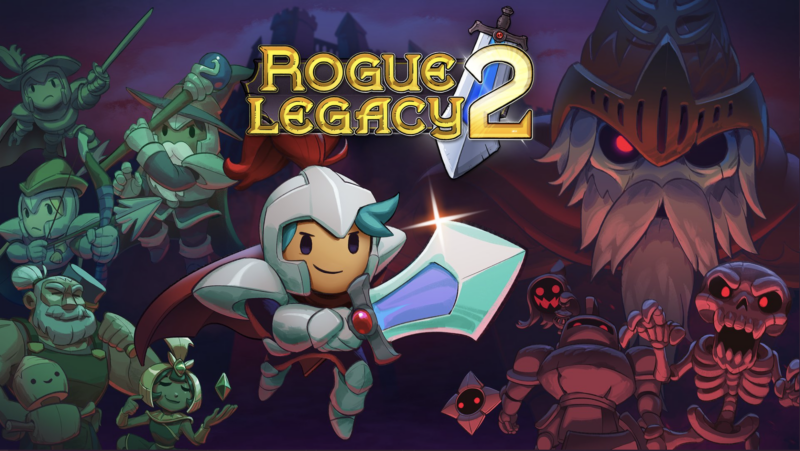

Rogue Legacy 2 review: Dopamine in video game form
source link: https://arstechnica.com/gaming/2022/05/rogue-legacy-2-review-a-perfect-sequel-to-a-great-game/
Go to the source link to view the article. You can view the picture content, updated content and better typesetting reading experience. If the link is broken, please click the button below to view the snapshot at that time.
I can quit any time I want to —
Rogue Legacy 2 review: Dopamine in video game form
Addictive roguelite is back and better than ever.
Aaron Zimmerman - 5/6/2022, 3:53 PM

There was something insidious about Rogue Legacy, the 2013 platformer "roguelite" developed by Cellar Door Games.
I remember sitting down to play the game for the first time on a Friday, and the next thing I knew, it was Sunday night. I emerged from that gaming bender bleary-eyed and disoriented, entirely unable to account for where my weekend went.
Rogue Legacy 2, which began life as an Early Access title in 2020, was fully released late last week, and it seems that Cellar Door has done it again. I’ll sit down to play “just one run” before I get my day started, and all of a sudden, it’s dark outside and I realize I’ve skipped two meals. For a certain kind of player, this game is a black hole.
Like its predecessor, Rogue Legacy 2 puts you in the role of an adventurer who strikes out on a quest to kill monsters and take their stuff. You hop around 2D levels and assault baddies with swords, bows, magic wands, and various other implements of death. Starting out as a puny weakling, you gradually upgrade your character to become strong enough to take on the game's six bosses, who rule over the game's six biomes.
Actually, that’s not quite right. Instead of upgrading one character, you upgrade your “legacy.” The game is a “genealogical roguelite,” according to the developer, meaning that every new character is the son or daughter of your previous character. At the beginning of each “run,” you are given the choice of three new characters to play; these are the “heirs” to your kingdom.
AdvertisementRogue Legacy 2 is a roguelike (or "roguelite," if you prefer—we'll get to that in a moment), which means it traffics in procedurally generated dungeons, randomized items, and permadeath. Permadeath is perhaps the defining characteristic of the genre; when you die during a run, that’s it—your character is done and you have to start over. And you will die. In general, roguelikes are known for their crushing difficulty, arcane mechanics, and propensity to scoff at hand-holding niceties like “instructions” (Rogue Legacy 2 is much more friendly when it comes to tutorials).
The reason roguelikes are so compelling to theory-crafting, numbers-obsessed role-playing game fans is that they distill the long, slow character progression arc of a traditional RPG down into a bite-sized snack. In The Binding of Isaac—a modern exemplar of the genre and one of the best games of all time—you start each run as a wimpy milksop who’s barely fit to take on the game’s weakest foes. Forty-five minutes later, you’re a veritable god, filling the screen with colorful waves of destruction. Roguelikes provide that familiar dopamine drip of constant character progression, just accelerated and condensed. But when a run is over and you want to restart, you’re back at square one.
Rogue Legacy was different. The game pioneered a now-popular offshoot of roguelikes—today often called "roguelites"—that emphasized “meta-progression." In these games, you’re not necessarily getting more powerful during a run; you are instead progressing between runs.
Page:
Recommend
About Joyk
Aggregate valuable and interesting links.
Joyk means Joy of geeK